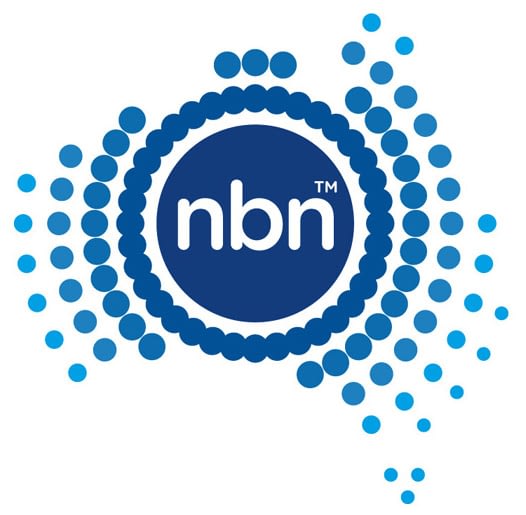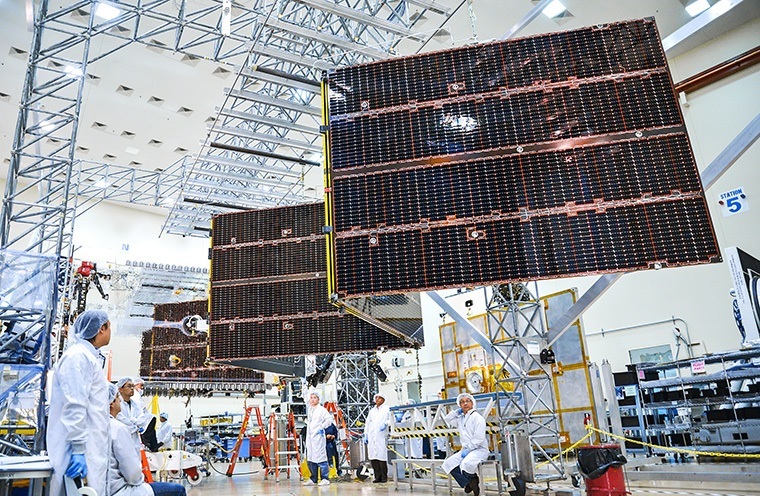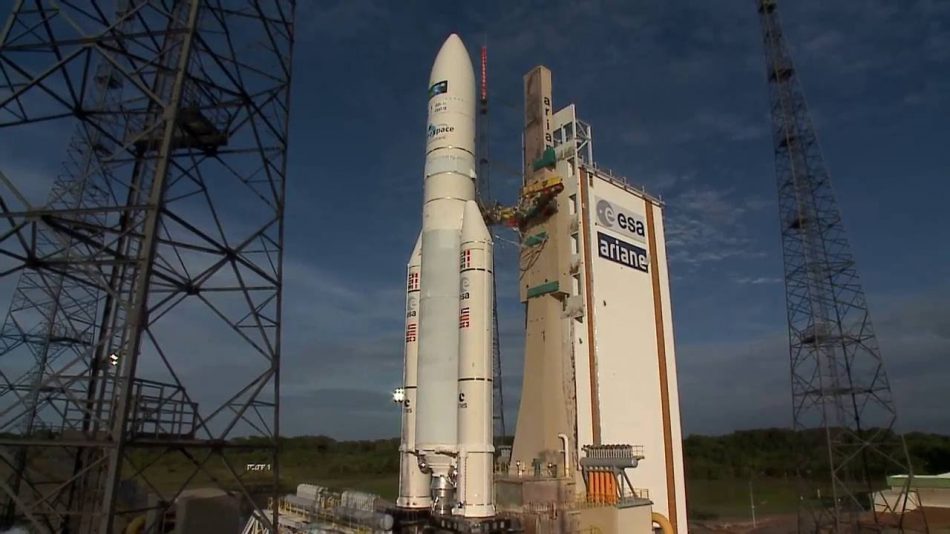
Back to selection

Supplier
NBN Co. Ltd. (NBN)
Melbourne office
Tower 5, Level 14
727 Collins street
Docklands VIC 3008
Australia
Sydney office
Level 13,
100 Mount street
North Sydney NSW 2060
Australia
The National Broadband Network (NBN) is the National Telecommunications company of Australia that operates two satellites (Sky Muster I and II) in orbit as part of their broadband fiber network. The company was established in 2009 to design, build and operate Australia’s wholesale broadband access network. Underpinned by a purpose to connect Australia and bridge the digital divide, NBN’s key objective is to ensure all Australians have access to fast broadband internet access as soon as possible, at affordable prices and at least cost.
To achieve this objective, NBN has been structured as a wholesale-only, open-access broadband network providing services on its local access network on equivalent terms to retail phone and internet-providers, to provision for end-user needs. This is intended to level the playing field in Australian telecommunications, creating real and vibrant competition within the industry and providing choice for consumers.
The National Broadband Network (NBN) is the National Telecommunications company of Australia that operates two satellites (Sky Muster I and II) in orbit as part of their broadband fiber network. The company was established in 2009 to design, build and operate Australia’s wholesale broadband access network. Underpinned by a purpose to connect Australia and bridge the digital divide, NBN’s key objective is to ensure all Australians have access to fast broadband internet access as soon as possible, at affordable prices and at least cost. is a wholly-owned Commonwealth company, a Government Business Enterprise, and is represented by Shareholder Ministers; the Minister for Communications and the Minister of Finance.
Company History
The National Broadband Network or NBN, was implemented by the Australian government in 2009 in order to help develop Australia’s communications systems for the future. NBN puts the infrastructure in place and commercial satellite operator Optus establishes a connection for customers.
NBN is Australia’s biggest infrastructure implementation project to date, expected to take nearly ten years to complete. NBN aims to provide nearly every house and business in Australia with the access to a fiber cable broadband network that claims to significantly transmit data at greater speeds than what is currently available to households through standard means. The business in charge of the operation is the NBN Co. Ltd, which will be responsible for the building, owning and operating of the network on behalf of the commonwealth.
The company released its Corporate Plan on August 30th, 2017 outlining how NBN is aiming to complete the network rollout of high-speed broadband Internet to all Australian premises within that timeframe, which will include the launch of the second of two satellites, Sky Muster 2, in early October 2016.
The Sky Muster I satellite was launched aboard an Ariane 5 rocket in 2015, and its twin, Sky Muster II, that was also built by Space Systems/Loral (SS/L), arrived at the European Spaceport in Kourou from launch operator Arianespace in French Guiana, on August 31st 2016. Sky Muster II was launched on October 5th, 2016.
The identical Ka-band High Throughput Satellites (HTS) were to provide advanced satellite services to rural parts of Australia, Australia’s coastal islands and external areas as far as Antarctica, that currently have either limited or no connectivity. NBN started providing service with the first satellite this year, and once commercial service is switched on for both, the company aims to deliver high-speed broadband Internet service via satellite to an estimated 400,000 Australians.
The NBN system will use a combination of terrestrial and satellite delivery methods, to reach the entire country, for which satellite is only responsible for reaching 3% of the total population. To be able to service 100% of the Australian population, NBN anticipates reaching 20% by optical Fiber-to-the-Home (FTTH), 38% by existing Fiber-to-the-Node (FTTN), 34% by Hybrid Fiber/Coaxial (HFC) cable already deployed by pay-TV companies, and 5% by Fixed Wireless (FW).
While only a small percentage of all premises in Australia, those living in some of the most remote areas of the country or simply don’t have access to the same quality of life applications, will now have access to those life-changing benefits only satellite.
NBN plans to complete the network build by 2020, connecting an estimated 8 million premises by the end of the decade. The network promises to deliver access to at least 25 Mbps downstream to all premises and at least 50 Mbps downstream to 90% of fixed line premises.
Sky Muster Satellites
Sky Muster I (NBN-Co 1A) communications satellite was built by Space Systems/Loral (SS/L) and launched by launch operator Arianespace on October 1st, 2015 from the Guiana Space Center in French Guiana. The satellite was launched in a dual launch with Argentina’s ARSat-2 from satellite operator ARSAT. Sky Muster I became operational in April 2016 and operates in geostationary orbit of 140° East, north of Australia.
Sky Muster II (NBN-Co 1B), built by Space Systems/Loral (SS/L) operates in geostationary orbit of 145° East. The satellite was launched on October 5th, 2016 by Arianespace on an Ariane 5ECA launcher.

Sky Muster II built by SSL. 
Sky Muster II ready for launch.
The Sky Muster satellites have 101 spot-beams which are focused satellite signals specially concentrated in power and cover a specific geographic area. The electromagnetic Ka-band spot beams are used to carry information from the End-users equipment on the ground to the satellites. Each satellite offers 80Gbps of bandwidth. The two satellites will provide high-speed brodband service to 400,000 Australian homes and businesses in rural and remote Australia and were designed to provide service for at least 15 years.
The name Sky Muster was made up by Bailey Brooks, a six-year-old School of the Air (remote school) student who lives on a cattle station (i.e. large farm) 400km (250 mi) from Darwin. Bailey won a competition to draw a picture of how the satellite benefits rural Australians. Her drawing of the rocket was printed on the payload fairing, and her class named NBN-Co 1A “Sky Muster” as it would bring Australians together like a cattle muster, the gathering of cattle.
All trademarks and logos mentioned and showed on this page are property of their respective owners.
Resources
www.nbnco.com.au
www.directory.gov.au
www.wikipedia.org
www.optus.com.au
www.abc.net.au
www.spaceflight101.com
www.viasatellite.com edition January 9th 2016
www.studentcms.ise.canberra.edu.au

Supplier
NBN Co. Ltd. (NBN)
Melbourne office
Tower 5, Level 14
727 Collins street
Docklands VIC 3008
Australia
Sydney office
Level 13,
100 Mount street
North Sydney NSW 2060
Australia
Satellite fleet by NBN Co. Ltd. (NBN)
| Spacecraft | Country | |||
| Sky Muster I (NBN-Co 1A)GEO | 140° East | NBN Co. Ltd. (NBN) |  | Communication |
| Sky Muster II (NBN-Co 1B)GEO | 145° East | NBN Co. Ltd. (NBN) |  | Communication |